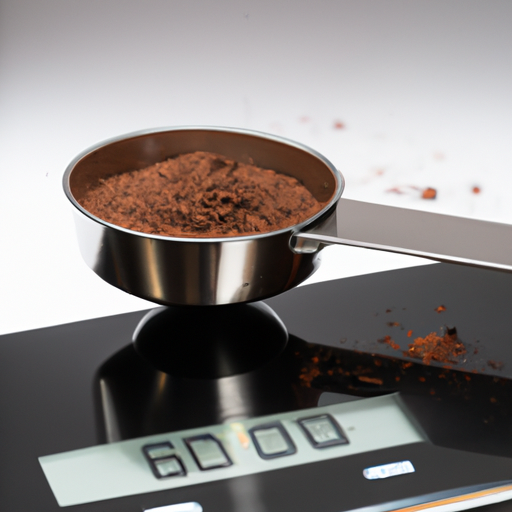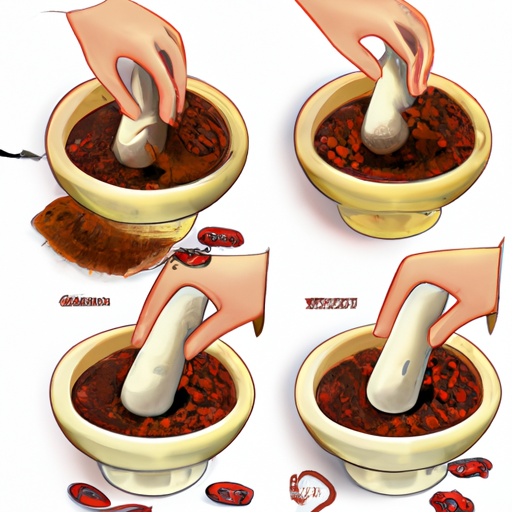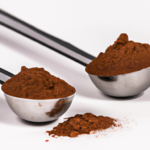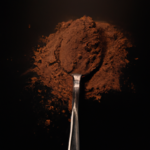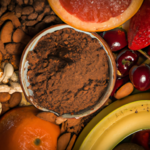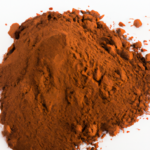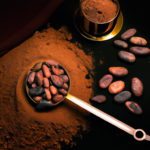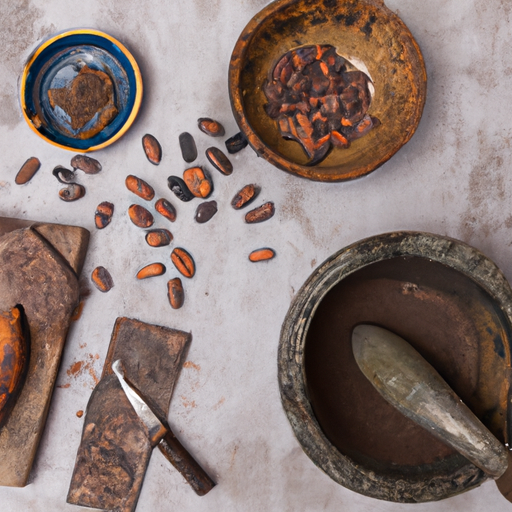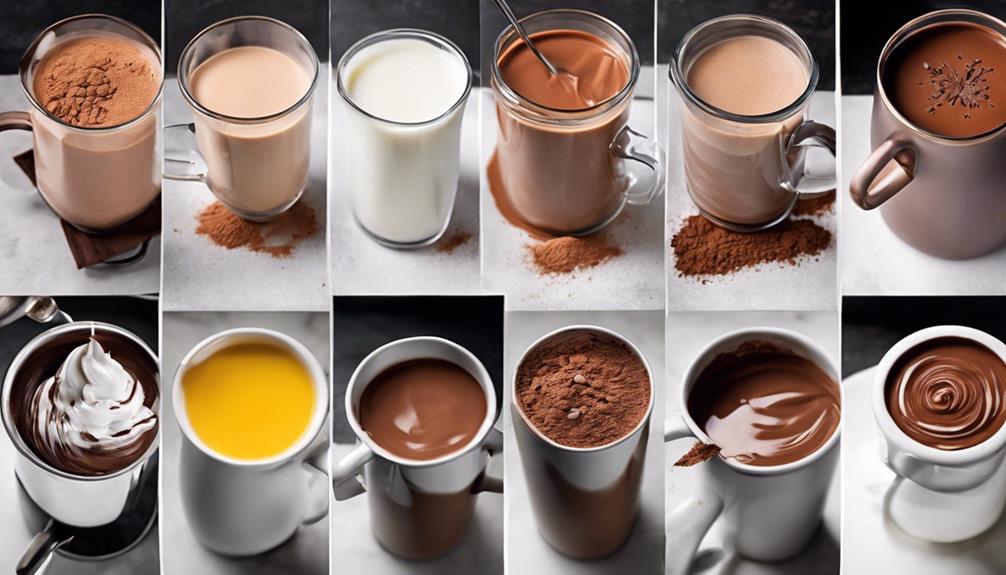As I sit here, savoring the rich aroma of raw cacao powder, I can’t help but marvel at the wonders it holds. This delectable ingredient, derived from the cacao bean, has captured the hearts and taste buds of many health-conscious individuals. But amidst the allure of its flavor and potential health benefits, a question lingers in the minds of those watching their calorie intake: just how many calories are in a tablespoon of raw cacao powder?
In this article, we will delve into the nutritional profile of raw cacao powder and discover the exact calorie content it holds. We will explore the factors that can influence this calorie count and discuss how you can incorporate this delectable ingredient into your diet.
Furthermore, we will explore the potential health benefits of raw cacao powder and consider its implications for weight management.
So, join me on this journey as we unlock the secrets of raw cacao powder and uncover the truth behind its calorie content.
Key Takeaways
- Raw cacao powder contains 12 calories per tablespoon.
- Incorporating raw cacao powder into your diet offers potential health benefits.
- Raw cacao powder is packed with antioxidants, minerals, and flavonoids.
- Portion control is important for weight management when consuming raw cacao powder.
What is Raw Cacao Powder?
Raw cacao powder is a delicious and nutritious ingredient that adds a rich chocolate flavor to any recipe! It is made by cold-pressing unroasted cacao beans, which helps retain its nutritional properties. This process preserves the natural enzymes and antioxidants found in cacao, making it a healthier alternative to processed cocoa powder.
Besides its delightful taste, raw cacao powder has various culinary uses. It can be used in smoothies, baked goods, homemade chocolate, or even sprinkled on top of desserts. Its intense flavor and smooth texture make it a versatile ingredient in the kitchen.
Moving on to the nutritional profile of raw cacao powder, it is low in calories and packed with essential nutrients. It is a rich source of magnesium, iron, fiber, and antioxidants. These nutrients contribute to overall health and wellbeing. So, let’s explore the nutritional benefits of raw cacao powder in the next section.
Nutritional Profile of Raw Cacao Powder
Raw cacao powder is not only rich in flavor but also in nutrients.
In terms of calories and macronutrients, a tablespoon of raw cacao powder contains approximately 12 calories and 1 gram of fat.
Additionally, it provides a good amount of dietary fiber and essential micronutrients that are beneficial for overall health.
Calories and Macronutrients
Contrary to popular belief, a tablespoon of cacao powder contains a surprising amount of calories and macronutrients. Here are some key facts about the nutritional value of raw cacao powder:
-
Calories: A tablespoon of raw cacao powder provides around 12 calories, which may seem low, but can add up if you consume it in larger quantities.
-
Protein: Cacao powder contains about 1 gram of protein per tablespoon, making it a decent source of this essential macronutrient.
-
Fat: While cacao powder is relatively low in fat, it still contains approximately 0.7 grams of fat per tablespoon.
-
Carbohydrates: Cacao powder is also a source of carbohydrates, with around 2 grams per tablespoon.
In addition to these macronutrients, cacao powder is rich in fiber, which contributes to its potential health benefits. Fiber aids digestion, helps regulate blood sugar levels, and promotes a feeling of fullness.
Moving on to the next section, let’s explore the fiber and micronutrients found in raw cacao powder.
Fiber and Micronutrients
Not only does cacao powder provide a deliciously indulgent flavor, but it also boasts a wealth of fiber and essential micronutrients that can support your overall well-being.
When it comes to fiber content, cacao powder is a great source. A tablespoon of raw cacao powder contains about 3 grams of fiber, which is beneficial for digestive health and can help regulate blood sugar levels.
Additionally, cacao powder is rich in micronutrients such as iron, magnesium, and antioxidants. These micronutrients are important for various bodily functions, including energy production, immune system support, and protection against oxidative stress.
The fiber in cacao powder can also enhance the absorption of these micronutrients in the body.
Moving on to the next section about how many calories are in a tablespoon of raw cacao powder, it’s important to consider its overall nutritional profile.
How Many Calories are in a Tablespoon of Raw Cacao Powder?
Looking to satisfy your sweet tooth guilt-free? Find out how many calories are packed into a single tablespoon of raw cacao powder.
Raw cacao powder is a popular ingredient in various desserts and beverages due to its rich chocolate flavor. But how does it measure up in terms of calories?
A tablespoon of raw cacao powder contains approximately 12 calories. While this may not seem significant, it’s important to note that cacao powder is also a good source of fiber and micronutrients such as iron, magnesium, and antioxidants. These nutrients contribute to its overall nutritional value.
Factors such as processing methods and additional ingredients can affect the calorie content of cacao powder-based products. Understanding these factors can help you make informed decisions about your calorie intake while enjoying the delicious taste of cacao powder.
Factors Affecting Calorie Content
When considering the calorie content of raw cacao powder, two important factors to take into account are the brand and quality of the product, as well as the processing and preparation methods used.
Different brands may vary in their calorie content due to variations in ingredients or the way the cacao beans are sourced.
Additionally, the processing and preparation methods can affect the calorie content, as some processes may add or remove certain components that contribute to the overall calorie count.
Therefore, it is essential to consider these factors when determining the calorie content of raw cacao powder.
Brand and Quality
The exceptional quality of raw cacao powder can greatly impact the number of calories in a tablespoon. When comparing different brands, it’s important to consider that higher quality cacao powders tend to have a richer flavor and a higher calorie content. This is because they contain a higher percentage of cacao solids, which contribute to the overall calorie count.
However, taste preferences can also play a role in brand comparison. Some people may prefer a milder flavor, which could lead them to choose a brand with fewer calories. It’s important to note that the calorie content can vary slightly between brands due to differences in processing and preparation.
Understanding these factors can help you make an informed decision about which raw cacao powder to choose for your dietary needs.
Moving forward to the next section on processing and preparation, it’s important to consider the impact these steps have on the calorie content.
Processing and Preparation
To get the most out of your cacao powder, it’s essential to understand how the processing and preparation methods can affect its overall quality and taste.
The processing techniques used to make raw cacao powder can vary greatly, and these differences can impact its nutritional content. One common processing method is cold-pressing, which involves grinding the cacao beans at low temperatures to retain more of their natural nutrients. This method is believed to preserve the antioxidants and minerals found in cacao.
On the other hand, some brands may use high-heat processing methods, which can diminish the nutritional value of the powder. Additionally, it’s important to consider the potential health risks associated with raw cacao powder. Consuming large amounts of raw cacao powder can lead to caffeine and theobromine overdoses, resulting in symptoms like increased heart rate and digestive issues.
Therefore, it’s crucial to consume cacao powder in moderation and be aware of its potential effects. Understanding the processing techniques and health risks associated with raw cacao powder can help you make informed choices when incorporating it into your diet.
Incorporating Raw Cacao Powder into Your Diet
Incorporating raw cacao powder into your diet can be a delicious way to boost your antioxidant intake and satisfy your chocolate cravings. Just one tablespoon of raw cacao powder contains approximately 12 calories. Here are four ways you can easily incorporate this nutritious ingredient into your daily routine:
- Add raw cacao powder to your morning smoothies for a rich and chocolatey flavor.
- Use raw cacao powder in baking recipes as a healthier alternative to processed cocoa powder.
- Sprinkle raw cacao powder on top of your favorite desserts or yogurt for an extra dose of antioxidants.
- Mix raw cacao powder with warm milk or water for a comforting and nutritious hot chocolate drink.
By incorporating raw cacao powder into your diet, you can enjoy its delicious taste while reaping the potential health benefits it offers.
Transitioning to the next section, let’s explore the various potential health benefits of raw cacao powder.
Potential Health Benefits of Raw Cacao Powder
Incorporating raw cacao powder into your diet can offer a range of potential health benefits. This superfood is packed with antioxidants, minerals, and flavonoids that can support overall well-being. Consuming raw cacao powder has been linked to improved heart health, as it may help lower blood pressure and reduce the risk of cardiovascular diseases. Additionally, the flavonoids found in cacao powder have been shown to have anti-inflammatory properties, which can contribute to a healthier immune system.
To illustrate the nutritional value of raw cacao powder, consider the following table:
| Nutrient | Amount per tablespoon |
|---|---|
| Calories | 12 |
| Protein | 1 gram |
| Fiber | 1 gram |
| Iron | 1% of the DV |
| Magnesium | 3% of the DV |
Incorporating this nutrient-rich ingredient into your diet can be a delicious and beneficial choice. And now, let’s delve into the considerations for weight management.
Considerations for Weight Management
When it comes to weight management, there are several considerations to keep in mind. One important factor is practicing portion control. Being mindful of the amount of food you consume, including raw cacao powder, can make a difference in your weight loss journey. While raw cacao powder itself is low in calories, it can still contribute to weight gain if consumed excessively. A tablespoon of raw cacao powder contains around 12-20 calories. To incorporate it into your weight management plan, you can add it to smoothies, oatmeal, or yogurt for a healthy and flavorful boost. Remember, moderation is key when it comes to weight loss. By practicing portion control strategies and incorporating raw cacao powder into your diet, you can enjoy its potential health benefits without compromising your weight goals.
Now let’s move on to other nutritional considerations.
Other Nutritional Considerations
When considering other nutritional factors, remember that your body needs a variety of nutrients to function properly and maintain overall health. Here are three important nutritional benefits to keep in mind:
-
Vitamins and minerals: Your body requires a range of vitamins and minerals to support various bodily functions. These include vitamins A, C, E, and minerals like calcium, iron, and magnesium. Incorporating a diverse range of nutrient-dense foods can help ensure you’re meeting these needs.
-
Fiber: Adequate fiber intake is important for digestive health and can help prevent constipation. Foods like fruits, vegetables, whole grains, and legumes are excellent sources of fiber.
-
Antioxidants: Antioxidants are compounds that help protect your cells from damage caused by free radicals. Many fruits, vegetables, and other plant-based foods are rich in antioxidants.
While considering these nutritional benefits, it’s also essential to practice portion control. Eating a balanced diet in appropriate portions can help you maintain a healthy weight and prevent overconsumption.
As we conclude, it’s crucial to understand the importance of a well-rounded diet and make informed choices for your overall well-being.
Conclusion and Final Thoughts
To wrap things up, let’s take a moment to reflect on the importance of a well-rounded diet and the positive impact it can have on our overall well-being. Incorporating raw cacao powder into desserts can be a delicious and nutritious way to satisfy your sweet tooth. Not only does raw cacao powder add a rich and intense flavor to desserts, but it also provides various health benefits. Raw cacao powder is known for its mood-enhancing properties due to the presence of certain compounds that stimulate the release of endorphins and serotonin in the brain. These chemicals can help improve mood and promote a sense of well-being. Additionally, raw cacao powder is a good source of antioxidants, fiber, and minerals like magnesium and iron. Remember, moderation is key when indulging in desserts, even when using raw cacao powder. So go ahead and enjoy your treats while reaping the benefits of this superfood.
| Pros of Incorporating Raw Cacao Powder into Desserts | Cons of Incorporating Raw Cacao Powder into Desserts |
|---|---|
| – Rich and intense flavor | – High in calories and fat |
| – Mood-enhancing properties | – May cause digestive issues in some individuals |
| – Good source of antioxidants, fiber, and minerals | – Potential allergen for some people |
Frequently Asked Questions
Are there any potential side effects or risks associated with consuming raw cacao powder?
I investigated the theory and found potential side effects and risks of consuming raw cacao powder. Gastrointestinal issues and caffeine sensitivity are commonly reported. It’s important to be aware of these before consuming.
Can raw cacao powder be used as a substitute for cocoa powder in baking and cooking?
Raw cacao powder can be used as a substitute for cocoa powder in baking and cooking. It has nutritional differences, such as higher levels of antioxidants and minerals. It can also be incorporated into smoothies for added flavor and health benefits.
Is raw cacao powder suitable for individuals with certain dietary restrictions, such as those following a vegan or gluten-free diet?
Raw cacao powder is a great option for individuals following a vegan or gluten-free diet. It can be used as a substitute for cocoa powder in baking and cooking, providing delicious and nutritious vegan-friendly alternatives and gluten-free baking options.
How does the taste of raw cacao powder differ from regular cocoa powder?
The taste of raw cacao powder differs from regular cocoa powder in terms of its rich and robust flavor. Additionally, raw cacao powder has a higher nutritional content and offers numerous health benefits compared to regular cocoa powder.
Are there any specific dosage recommendations for consuming raw cacao powder for optimal health benefits?
For optimal health benefits, it is recommended to consume raw cacao powder in moderation. It is suggested to start with a small dosage and gradually increase if necessary, while considering individual health conditions and consulting a healthcare professional if needed.
Is Raw Cacao Powder a Low-Calorie Option for Diets?
Raw cacao powder is a great low-calorie option for diets, with only 12 grams of carbs in raw cacao powder per ounce. It is high in antioxidants and can satisfy chocolate cravings without derailing your diet. Plus, it adds a rich, chocolatey flavor to smoothies, oatmeal, and baked goods.
Conclusion
How many calories are in a tablespoon of raw cacao powder?
A tablespoon of raw cacao powder contains approximately 12 calories.
Raw cacao powder is a low-calorie ingredient that can be used in various recipes without adding excessive calories.
It is important to note that the calorie content may vary slightly depending on the brand and quality of the raw cacao powder.
However, when used in moderation, raw cacao powder can be a guilt-free addition to your diet.

